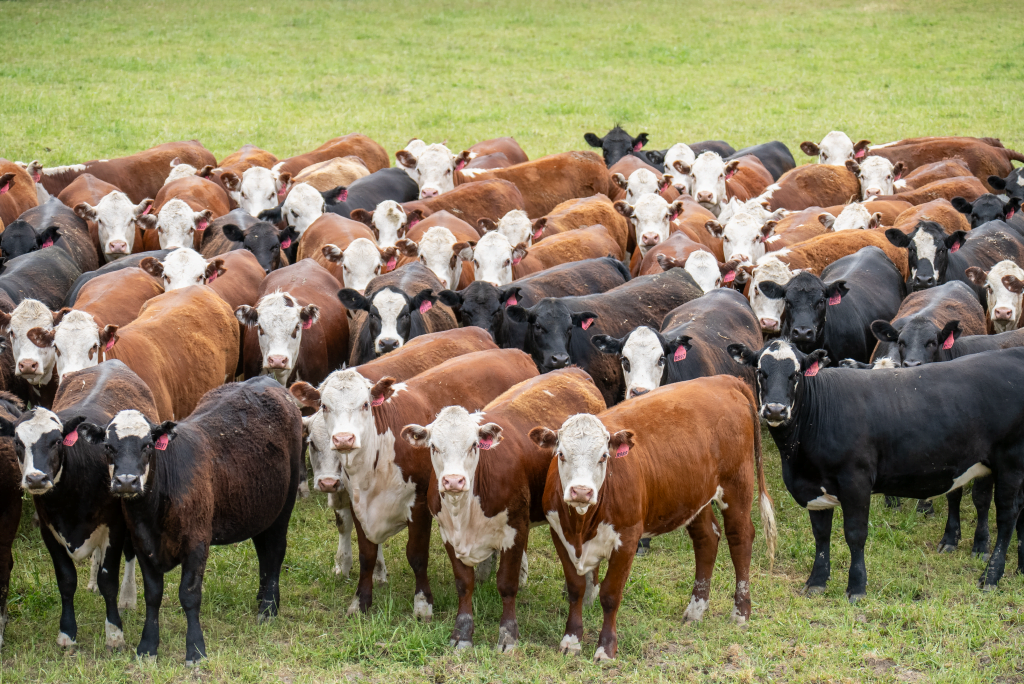Constance Cattle Chronicles: Stories from Breeders and Farmers on Their Successes and Difficulties
Constance Cattle Chronicles: Stories from Breeders and Farmers on Their Successes and Difficulties
Blog Article
Master the Art of Cooking With Turf Fed Meat
In the realm of culinary experience, grasping the art of food preparation with grass-fed meat holds a distinguished setting. From the tender structure to the robust flavor profile, grass-fed meat presents a canvas for culinary creativity.
Benefits of Grass-Fed Meat

When picking grass-fed meat, consumers can gain from its higher levels of omega-3 fats and antioxidants contrasted to conventionally increased meat. Constance Cattle. Omega-3 fats are necessary nutrients that support mind wellness, reduce inflammation, and promote heart health and wellness. Grass-fed meat is known to have up to 5 times much more omega-3 fats than grain-fed meat, making it a healthier selection for those aiming to raise their intake of these beneficial fats
In enhancement to omega-3 fatty acids, grass-fed meat is likewise richer in anti-oxidants such as vitamins E and C, as well as beta-carotene. Antioxidants play a vital function in securing cells from damage triggered by complimentary radicals, which can contribute to different persistent conditions and increase aging. By choosing grass-fed meat, consumers can not just take pleasure in a much more nutrient-dense and tasty healthy protein resource but additionally sustain their total health and health.
Including grass-fed meat into your diet regimen can be a basic yet reliable way to enhance your nutritional consumption and enjoy the advantages of omega-3 fatty acids and anti-oxidants that are normally bountiful in this kind of meat.
Ideal Cooking Methods
Using suitable cooking methods is important to protect the nutrient account and improve the taste of grass-fed meat. When cooking grass-fed meat, it is necessary to keep in mind that it is leaner than traditionally elevated meat, making it a lot more vulnerable to drying if overcooked. To ensure a juicy and flavorful end result, take into consideration cooking grass-fed meat at a little lower temperatures than you would with grain-fed meat.
Grilling is a preferred method for food preparation grass-fed meat as it allows excess fat to leak away, protecting against flare-ups that can trigger charring. Another fantastic cooking technique for grass-fed meat is pan-searing.
Slow food preparation methods such as braising or cooking are also superb choices for harder cuts of grass-fed meat, as they aid damage down the muscle fibers and tenderize the meat. Whichever food preparation approach you choose, keep in mind to allow grass-fed meat rest after preparing to allow the juices to rearrange, ensuring a wet and tender last dish.
Taste Pairings and Seasonings
To enhance the all-natural tastes of grass-fed meat, strategic flavor pairings and spices play a crucial duty in elevating the total dining experience. Grass-fed meat has a rich, unique taste that can be enhanced and improved by meticulously picked active ingredients.
Along with natural herbs, flavors such as black pepper, garlic, and smoked paprika can additionally boost the taste account of grass-fed meat meals. These seasonings give an equilibrium of warm, sweetness, and smokiness look here that can enhance the overall eating experience. When seasoning grass-fed meat, it is important to utilize top quality salt, like sea salt or Himalayan salt, to draw out the meat's flavors without adding unnecessary chemicals or ingredients.
Storage Space and Managing Tips
Correct storage and handling methods are important for preserving the quality and freshness of grass-fed meat. When storing grass-fed meat, it is important to maintain it cooled at temperatures listed below 40 ° F(4 ° C) to stop bacterial development and wasting. To extend the meat's life span, take into consideration covering it snugly in parchment paper or butcher paper prior to placing it in a closed container or sealed plastic bag - Constance Cattle. Avoid storing grass-fed meat near strong-smelling foods as it can absorb odors conveniently.
When handling grass-fed meat, it is crucial to practice great health to avoid cross-contamination. Wash your hands extensively before and after taking care of the meat, and make certain that all tools and surfaces that come into call with the meat are cleansed and sterilized appropriately. Furthermore, use different cutting boards for meat and vegetables to prevent bacterial transfer.

Leading Grass-Fed Meat Recipes
When thinking about the finest methods to relish the high quality and freshness of grass-fed meat, discovering excellent recipes can elevate your cooking experience. Grass-fed meat's rich taste and leaner account offer themselves well to a selection of dishes that highlight the natural benefits of the meat.
If you remain in the state of mind for something lighter, a Grilled Grass-Fed Burger offered with fresh toppings and a side of sweet potato fries is a scrumptious selection. Furthermore, a Herb-Crusted Grass-Fed Crown roast roasted to perfection with an assortment of breadcrumbs and natural herbs is a show-stopping dish for unique celebrations. These leading grass-fed meat dishes showcase the convenience and premium quality of grass-fed meat, allowing you to enjoy its exceptional preference in different cooking developments.

Final Thought
Finally, grasping the art of cooking with grass-fed meat provides various advantages, including enhanced nutritional value and superior taste. By utilizing the finest cooking methods, exploring with taste pairings and seasonings, and adhering to proper storage and managing pointers, you can create scrumptious and healthy recipes. Try out some top grass-fed meat recipes to elevate your cooking skills and delight in the complete potential of this premium active ingredient.
When cooking grass-fed meat, it is try this out vital to bear in mind that it is leaner than traditionally raised meat, making it more prone to drying out if overcooked. To guarantee a juicy and savory end result, consider cooking grass-fed meat at a little reduced temperatures than you would certainly with grain-fed meat.
When flavoring grass-fed meat, it is important to make use of high-quality salt, like sea salt or Himalayan salt, to bring out the meat's flavors without including unnecessary chemicals or ingredients.
Grass-fed meat's abundant taste and leaner account provide themselves well to check my blog a range of recipes that highlight the all-natural goodness of the meat. These leading grass-fed meat recipes display the adaptability and premium high quality of grass-fed meat, enabling you to appreciate its remarkable preference in numerous cooking productions.
Report this page